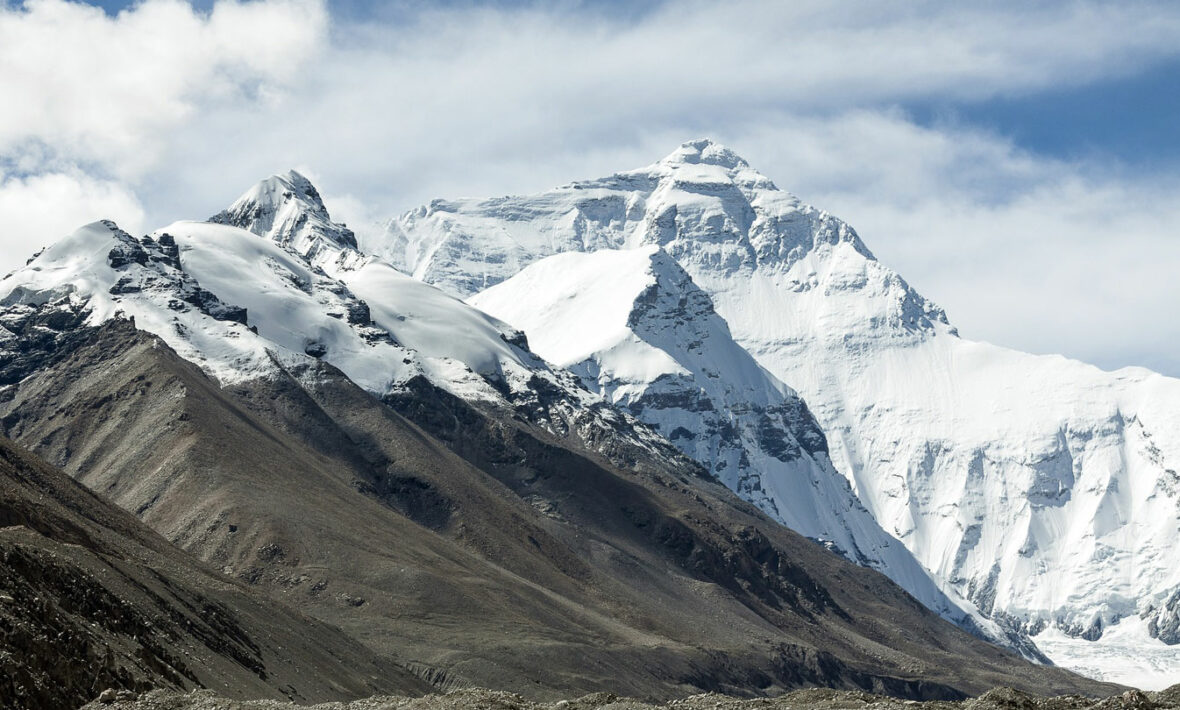
Hiking up to Everest Base Camp is on 90% of people’s bucket lists (fine, we made up that statistic but surely it’s a close guess). While the more famous Nepal side can only be reached by an intense hike, anyone can reach the China side, which is actually in Tibet, easily by car. However, this has come with a host of issues which have led to China making the decision to close the camp to the general public, and only allowing entry under strict guidelines.
Why? Trash—that’s why. Not car pollution. Not overcrowding. Trash.
It doesn’t take a genius to figure out how the piles of trash landed on the majestic mountain either, as careless day-trippers who travelled to see the icon and left behind their waste to pollute the environment. In 2018, Tibetan authorities told Sky News that 30,000 workers collected over 300 tonnes of trash from the mountain. It’s a truly staggering number that definitely helps us understand why exactly they’ve shut it down.
Read More:
10 simple ways to reduce your plastic footprint
This isn’t an issue that popped overnight either, with The United Nations warning China in 2016 that the base camp was a ticking trash time bomb that needed to be addressed ASAP.
140,000 kg of trash in Mt. #Everest region – #litter problem is big in #mountains , @UN report shows way out: https://t.co/HqhBdFmanx pic.twitter.com/fRcZVGG9A6
— UN Environment Programme Europe (@UNEP_Europe) December 12, 2016
With over 40,000 visitors every year (according to 2015 data, so you can bet it’s probably even more today), China made the difficult decision to close tourist access to the world’s highest peak and try to turn the tide on the dump it’s become. Now, they will only be releasing 300 permits for climbers only (not for people who arrive in cars) each year and anyone who goes onto the mountain will be required to “carry out all their waste with them” says Ci Luo, the director of the Chinese Mountaineering Association.
Read More:
5 reasons why Nepal should be on your bucket list
To try and accommodate the tourist demand, a new “tent city” will be set up for “ordinary tourists” two kilometers away from the old base camp. This will allow them to come pretty close to the Everest view they were hoping for, but it will be in a more controlled environment below the monastery on the mountain (which is 5,000 metres above sea level) where pollution will be managed more easily and will not actually touch the mountain.
While 300 tonnes of rubbish may sound like a lot, there is still plenty that needs to be removed from the slopes. To combat this, the government has also introduced an incentive program that pays Sherpas $2 for every kilogram of trash they bring back down the mountain with them following every climb. It’s a sad state that something so beautiful has had to be closed due to the masses of waste, but it’s amazing that China is making the tough call to try to turn it all around.
China’s #Everest cleanup rakes in 8.5 tonnes of #garbage: Since 2015, Tibet has given every climber two bags to retrieve atleast 8 kg of trash, levying a fine of $100 for each kilogram by which a climber falls short. Nepal adopted similar rules in 2014. https://t.co/okCbHsntnt pic.twitter.com/oFcNH6qfiQ
— India Water Portal (@indiawater) June 8, 2018



